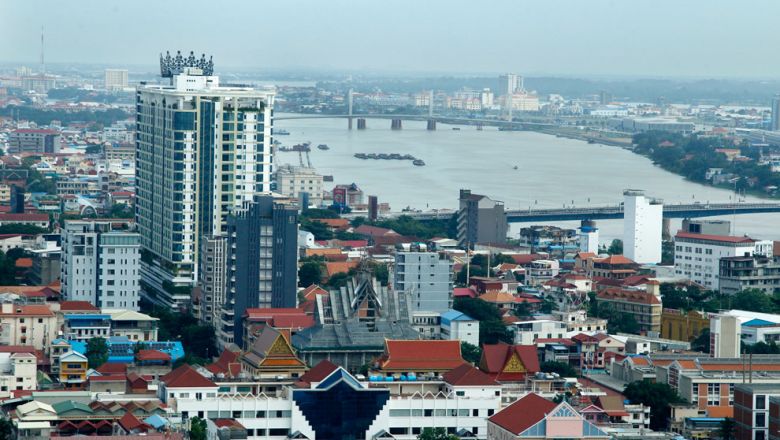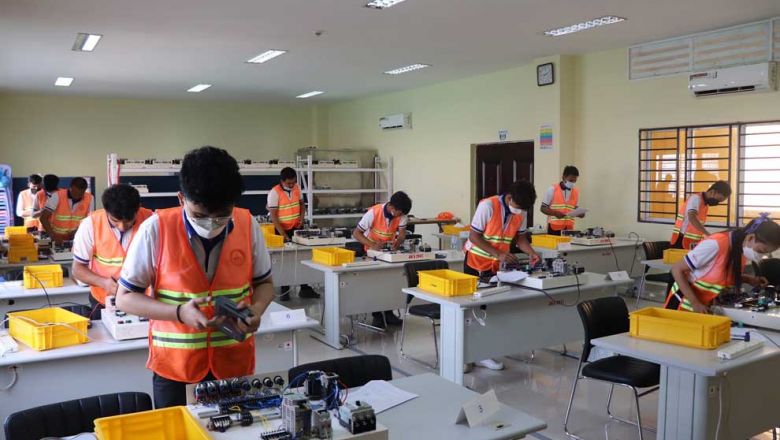Cambodia-China FTA brings growth
Cambodia-China FTA brings growth
Nearly two years have passed since the Cambodia-China Free Trade Agreement (CCFTA) came into effect in early January 2022. This period has witnessed significant growth in bilateral trade, as well as a surge in Chinese investment in Cambodia.
The CCFTA was signed by then-Minister of Commerce Pan Sorasak and his Chinese counterpart, Zhong Shan, on October 12, 2020. The signing was observed via video link by former Prime Minister Hun Sen and Chinese Foreign Minister Wang Yi.
Under the terms of the CCFTA, 98 per cent of Cambodia’s exports to China and 90 per cent of China’s exports to Cambodia are exempt from tariffs. The agreement was implemented on January 1, 2022.
Export progress
Ministry of Commerce spokesperson Penn Sovicheat told The Post about the various trade agreements with China which Cambodia is a signatory to.
“We have the CCFTA with China. Being an ASEAN member, the Kingdom is also a signatory to the ASEAN-China Free Trade Agreement (ACFTA). Moreover, we’re part of the Regional Comprehensive Partnership Agreement (RCEP), which is a multilateral free trade agreement,” he said.
He noted that exporters currently use the frameworks of these three agreements for access to the Chinese market. Among them, the RCEP is the most favoured. Both the ACFTA and the RCEP offer numerous duty-free pathways, while the CCFTA introduces several additional tariff exemptions.
“We anticipate that for products not covered by the ACFTA or the RCEP, exporters will utilise the CCFTA. There’s a consistent rise in exports in both product categories and trade volume,” he said.
“For milled rice exports, Cambodia has a 400,000-tonne quota, which may increase next year. Exports of other agricultural products, like cassava, mango, banana and Pailin longan, have also grown in volume and
value under the RCEP. We have also been exporting a significant quantity of aquaculture products to China, with the export of up to 12 types of fishery products recently permitted,” he added.
“We hope to maximise the benefits of both the CCFTA and the ACFTA, using them complementarily. If certain products don’t receive zero tariffs under one agreement, the other might offer relief. I expect China to remain a crucial trade ally for Cambodia, not just under the Belt and Road Initiative (BRI) but also via the synergies of the above three agreements,” Sovicheat continued.
Anthony Galliano, group CEO of Cambodian Investment Management Co Ltd, shared his insights about Cambodia’s trade relations.
“China is Cambodia’s largest trading partner, with trade volume projected to hit $12 billion,” he told The Post.
“This accounts for 8.6% of Cambodia’s exports and 33.8% of its imports. The [agreement] has been praised as a pivotal deal, but historically, the trade balance has tilted in China’s favour, causing a trade deficit for Cambodia. Comparatively, the US runs a trade deficit with the country of $11.7 billion. The typical trade cycle involves Cambodia importing raw materials for the garment sector from China and then exporting finished goods like apparel and leather products to the US and EU,” he said.
“The CCFTA’s influence on trade with China has been marginal thus far. The primary advantage for Cambodia would be an uptick in exports to China, starting from a modest base. The existing trade deficit of $9 billion will require years to chip away at,” he explained.
Quantities still limited due to sanitary and phytosanitary barriers
Sanitation and phytosanitary concerns remain significant challenges for Cambodia’s agricultural exports to Asia’s primary market.
While these issues fall under the purview of the Ministry of Agriculture, Forestry and Fisheries, the commerce ministry plays an instrumental role in supporting producers and exporters.
Sovicheat highlighted how his ministry aids the Chinese authorities in streamlining the implementation and mutual recognition of sanitation and phytosanitary certifications to facilitate smoother exports.
“We have observed notable progress. In the realm of aquaculture and fishery products, the Chinese side has inspected, recognised and provided guidance for correct implementation. For some agricultural commodities, like bananas and mangoes, the agriculture ministry has urged plantation or farm owners to register, ensuring recognition from China. As a result, products from these registered sources are recognised for their quality and hygiene,” he explained.
“Sanitation and phytosanitary barriers aren’t unique to Cambodia; they’re a global concern. Whenever countries establish a free trade agreement (FTA), there’s an emphasis on these aspects to ensure the safety and quality of imports for consumers,” he said.
He also emphasised the importance of ongoing negotiations and underscored the necessity for Cambodian producers to elevate the quality of their products to satisfy Chinese standards.
Trade deficit issues
China stands as Cambodia’s predominant international trading partner, constituting 25.6% of Cambodia’s international trade volume during the initial seven months of 2023, equating to $27 billion.
From January to July, the bilateral trade volume experienced a growth of 1.8% year-on-year, reaching approximately $7 billion, as reported by the General Department of Customs and Excise (GDCE). Cambodia’s exports to China totalled $814.7 million, marking a 16.2% rise from the previous year. Conversely, imports from China saw a marginal increase of 0.1% to $6 billion.
This trade activity led to a trade deficit for Cambodia of $5.4 billion, a slight improvement from the $5.6 billion deficit recorded during the same period in 2022.
“Given Cambodia’s relatively small market stature in the global context, with limited purchasing power and production capacity, the surge in imports – primarily to fulfil domestic demand and to procure raw materials for the industrial sector – is a significant factor resulting in a greater volume of imports than exports,”” Sovicheat explained.
“It’s not feasible to directly compare the import/export trade balance. Our current stage of development sees rising demand for food, consumer goods, construction materials, vehicles and other essentials, including production-related materials. Simultaneously, we are witnessing investment inflow for export processing,” he added.
Galliano highlighted China’s robust demand for commodities, including crude oil, ores, minerals and electrical equipment.
“While China’s agricultural imports are expanding, Cambodia may not be positioned to cater to China’s primary import needs. As the US and EU pivot to diversify their supply chains and minimise dependence on China, ASEAN nations, especially Vietnam, Malaysia and Indonesia, are poised to reap substantial benefits. For Cambodia to capitalise on these opportunities, it’s essential to enhance its manufacturing base, bolster infrastructure and reduce electricity costs,” he said.
“To leverage the ongoing trend of the UU and EU diversifying away from China, it would be strategic for China to channel its foreign direct investment towards manufacturing in Cambodia. This would amplify Cambodia’s manufacturing competence and subsequently boost its exports,” he added.
Bright future
Prime Minister Hun Manet engaged with prominent Chinese leadership, including meetings with president Xi Jinping, premier Li Qiang and Zhao Leji, chairman of the Standing Committee of the National People’s Congress, during his first official visit to China from September 14-17.
Manet also attended the 20th China-ASEAN Expo in Nanning, the capital of south China’s Guangxi Zhuang Autonomous Region, an event which ran from September 16-20.
“The Chinese have reiterated their enduring commitment to aid Cambodia’s economic progression and the enhancement of its citizens’ quality of life. This commitment manifests through further advances in the Global Development Initiative (GDI) and infrastructural projects encompassing rural roads, bridges, water facilities, educational institutions and healthcare centres. The Cambodian delegation conveyed its profound gratitude for China’s unwavering support,” said an official statement released after his visit.
















